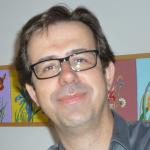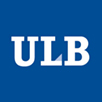
Diego Barrado
Universidad Autónoma de Madrid (UAM) / Associate Professor of Human Geography / UAM Local Coordinator
Courses
The Sustainable and Liveable City
Research interests
Keywords: urban studies, culture and economic development, tourism, nature and development
Urban tourism: Since the Grand Tour in the eighteenth and nineteenth century tourism has been an innate activity in cities, mainly in those which has an important cultural heritage and has been traditionally considered as ‘historic cities’. However, it has not been until the last decades when tourism has acquired an important presence in the political, economic, social, cultural and special urban life. Due to this new public presence of tourism, deeper researches are need in the relationships between urban dynamics and tourism sector in many different aspects, as for instance: a) tourism as an urban economic sector; b) cultural and monumental heritage and tourism; c) tourists and the use of public space; d) social and cultural implications of tourism.
Urban cultural sustainability: Although the cultural dimension has been traditionally accepted as one of the main pillar of sustainability, environmental and physical viewpoints have traditionally dominated this scientific approach to cities. Due to this predominance of these aspects, deeper researches are needed in relation with a huge array of concepts and processes directly related with the role of culture in the processes of urban sustainable development, such as heritage, cultural capital, identity and sense, how to measure sustainability and so on.
Cultural industries and urban city centres: In the last decades culture has begun to be considered as an important economic sector. Form an urban point of view, this change has entailed that apart from been promoted as a social right through equipments and facilities, culture is considered a strategic sector for the regeneration of the urban city centres. Among other important issues, it is crucial to understand a) how these cultural actors and micro-companies cluster to develop a chain of value; and b) how some characteristic cultural urban activities such as theatre, music, cinema and so on could improve the cities centres for an geographical, social and economic point of view.
City image and urban marketing: Among many other aspects, the globalisation and liberalization of the economy has meant that cities have become important actors in the global economic competition. For this reasons, cities are using the traditional process of marketing to promote or ‘sell’ themselves in a global market, to attract investors, companies, visitors, events and so on. This process involves reflecting and research about a) the traditional image conveyed by a city and b) how it has been use/modify/change for the new economic purpose; as well as c) the means used to convey new images and d) their social, cultural and geographical effects.
Contact
Departamento de Geografia
Universidad Autonoma de Madrid
Campus de Cantoblanco
28049 Madrid, Spain
Tel: +34 91 497 20 01





